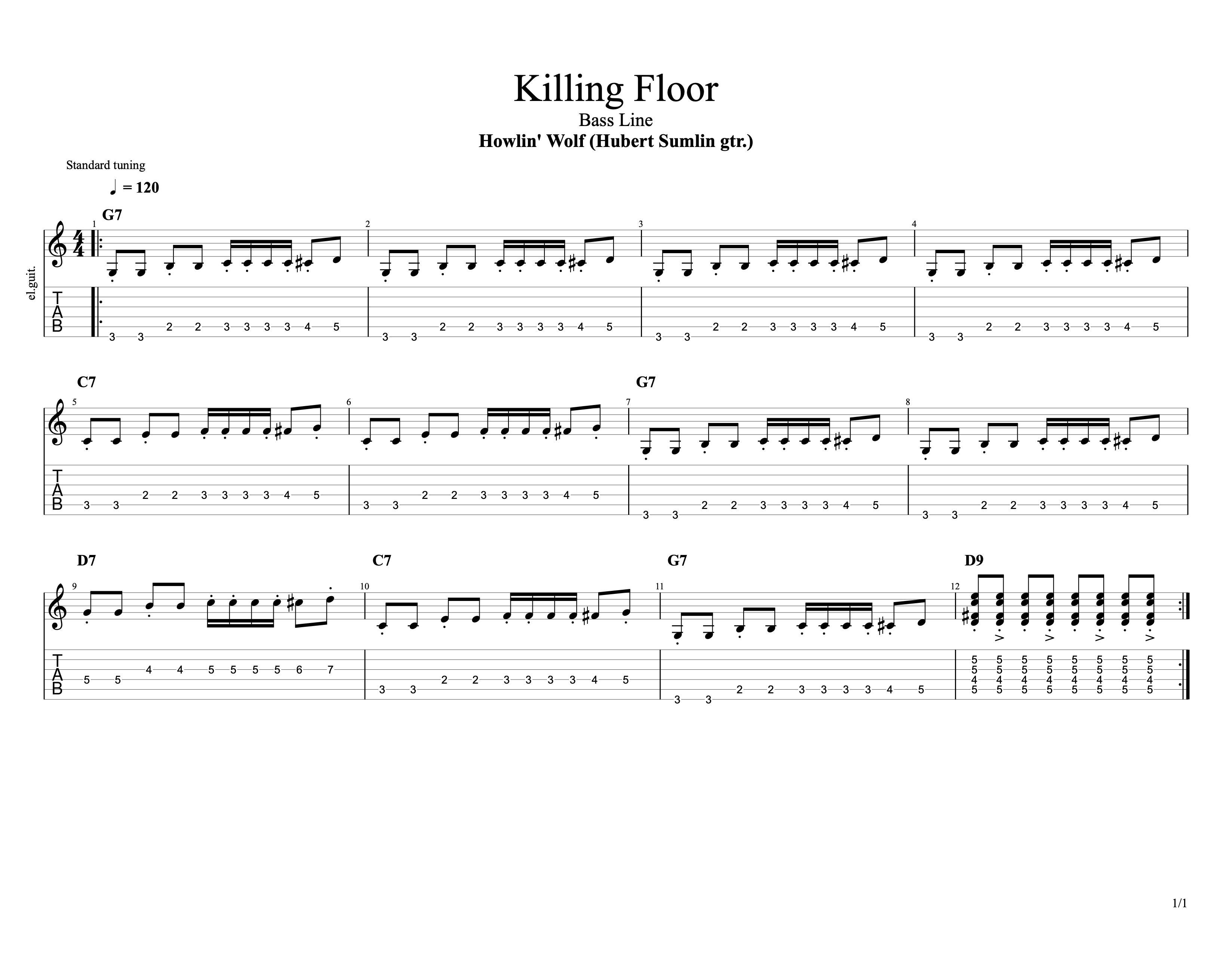This post is about a blues classic: the song “Killing Floor” by Howlin' Wolf, with Hubert Sumlin on guitar. You simply cannot listen to this song too many times:
The song has been covered by pretty much everyone, including Jimi Hendrix. Led Zeppelin was obviously influenced by the song when they created The Lemon Song. They even paid Howlin’ Wolf $45K after they were sued, but nobody knows how much Arc Music (owners of the rights) nor the lawyers made.
I learned the song from Jeff McErlain’s wonderful 30 Authentic Blues Grooves You Must Know. That course is a treasure trove of incredible blues classics, and I cannot recommend it more highly!
The record is in the key of A, but like Jeff I’m going to show it in the key of G to move it down a bit on the neck. It’s a simple 12 bar I, IV, V blues progression:
/ G7 / % / % / % /
/ C7 / % / G7 / % /
/ D7 / C7 / G7 / D7 /
The song starts with an intro section using the turnaround (D7/C7/G7/D7) before starting with bar 1.
Before learning this, or any song, I highly recommend you just listen to it over and over and over. Try to count along with the beat as you tap your foot (“One and Two and Three and Four and, One …"). Each time through, try to focus on different parts. Try to listen to the bass line separately from the guitar parts.
Pay particular attention to the rhythms of the song. Tap your feat and don’t be ashamed to boogie in your seat a bit as you start to feel the groove. Listen for the heavy backbeat emphasis Hubert places on the “ands” as well as the occasional triplet rhythms.
Let’s start with the easiest part, the bass line:
Technically, the riff is a simple major arpeggio over each chord, with a cool chromatic run and catchy rhythm (but I doubt that Hubert thought about it that way — he almost certainly just thought it sounded cool). The riff outlines each chord in the song with the root note, M3, and P5 notes of each chord, but ascends chromatically from the M3 to the P5.
Here it is in tablature:
Slight nuances you may want to take note of:
-
It’s played staccato throughout. As described in the video, you will want to palm mute slightly. Place the side of your strumming hand lightly across the strings very close to the bridge. The goal isn’t to mute the notes entirely, but to keep them from ringing out. The dotted notes in the tablature indicate muting: the rhythm is “du-dah du-dah du-du-dah-du du-dah”.
-
The last line really emphasizes the backbeat, the “ands” of the rhythm. The symbols that look like a greater-than sign indicate an accented note (the “ands” in the last bar).
-
This song is all about rhythm and groove. It’s not necessary (or even desirable) to play it cleanly, but by God you want to feel the groove!
-
Hubert plays it almost entirely “straight,” without swinging the eighth notes. That doesn’t keep him from putting in the occasional triplets, though. Listen!
